
The Everest Base Camp Trek is one of the best treks for bird watching and bird photography in the Himalayas for three reasons. Firstly, the Everest National Park alone is home to 219 species of birds. Second, you can enjoy birding without compromising on comfort as there are mid-range to luxury lodges throughout the trek. And lastly, wildlife in Everest Region is exceptionally approachable as the Sherpas do not hunt and bother wild animals.
Best time for Birding in Everest Region
April and May are the best months for birding along the Everest Base Camp Trek. Most altitudinal migrants have made their way up, and there is a lot of breeding activity during this time. October and November, the best months for mountain views, however, have much less variety, as many of the altitudinal migrants have moved lower.
For a detailed treatment, please refer to the Best time to trek to Everest Base Camp Trek Series.
How to get to Everest Region
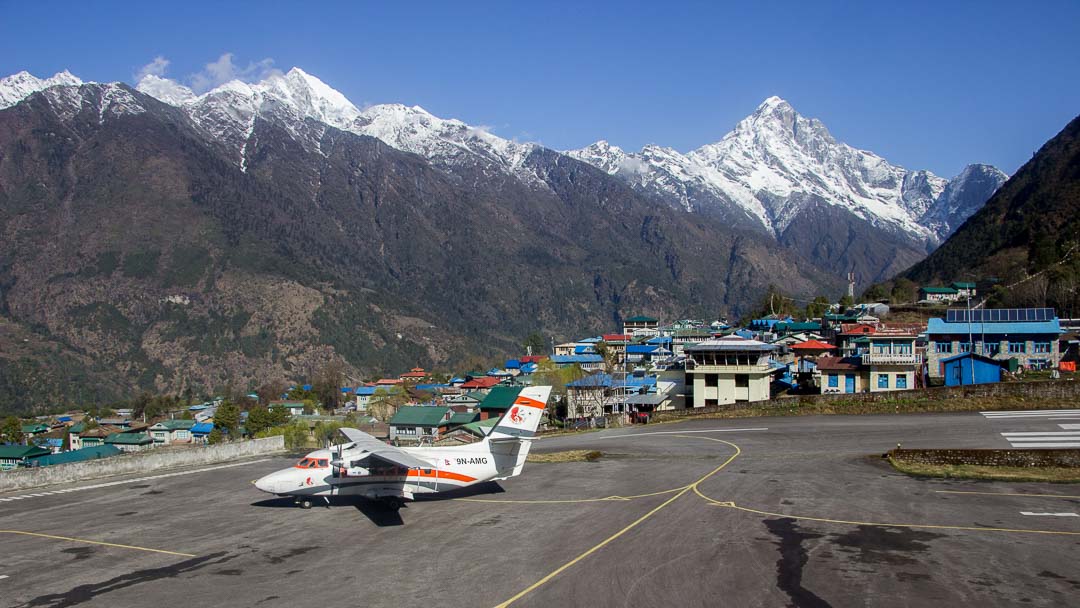
The most popular way to start the Everest Base Camp Trek is to take a flight from Kathmandu to Lukla. You can also choose from several alternatives, which include flying to Phaplu or driving to Jiri.
Suggested Itinerary
Among the numerous routes in the Everest Region, the Gokyo Ri and Gokyo Lakes Trek is the best one for birders. The trek sees fewer people than the Everest Base Camp Trek and goes through a wider variety of habitats. It is also possible to include the Everest Base Camp in your trek by going through the 5,420 meters high Cho La Pass.
11 Birds of the Everest Region
11. Himalayan Griffon

High up in the afternoon skies above Ama Dablam, you will see these birds circling. These vultures are ever watchful for the dead and dying. Just take a nap for a few hours in a secluded area, and you will probably have these birds circle you! You will then realize that the specks you see up in the sky are actually huge birds with ten feet wingspan and an ugly bald head.
An interesting fact is that in some parts of the Himalaya, the dead are offered to Himalaya Griffons in an ancient burial rite. The ritual seems surreal and spooky, especially when the corpse is being chopped down. However, it makes perfect sense in a land where cremation is out of the question because wood is scarce, and burial is ineffective because decomposition can take ages.
Best place to see in the Everest Region: Pretty much everywhere after 11:00 am. Namche is especially useful.
10. Lammergeier
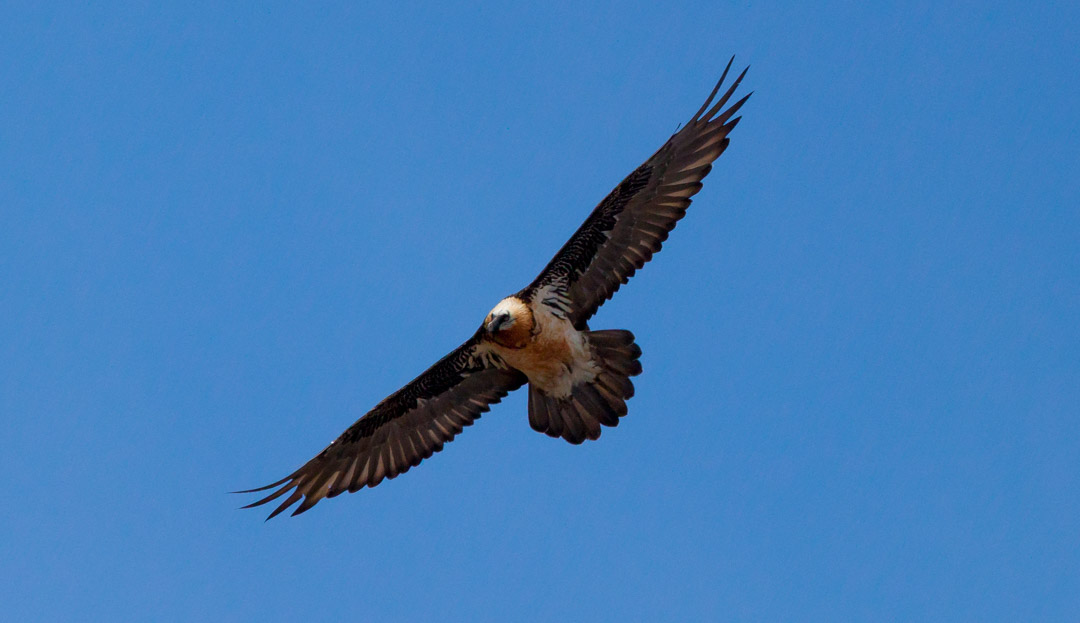
Lammergeier is a massive bird with a 10 feet wingspan. Despite its feathered head and slimmer build, it is a vulture nevertheless. It can be told from the commoner Griffons by their wedge-shaped tail and narrower wings. These vultures can afford to have feathered necks and heads because it doesn’t bother with the filthy entrails and messy muscles of a carcass. It feeds on what other vultures leave behind- the bones. Well, not precisely bones, but bone marrow and to get at it, it takes the bones for a joyride and breaks them by dropping it on rocks below. Legend has it that a famous Greek playwright Aeschylus was killed when a Lammergeier mistook his bald head for a rock. Check headgear now! They have also been known to aid smaller mountain goats and sheep to lose their foothold in precarious cliffs.
Best place to see in Everest Region: Around Namche Bazaar, Dingboche, Lobuche, Gokyo.
9. Alpine Accentor
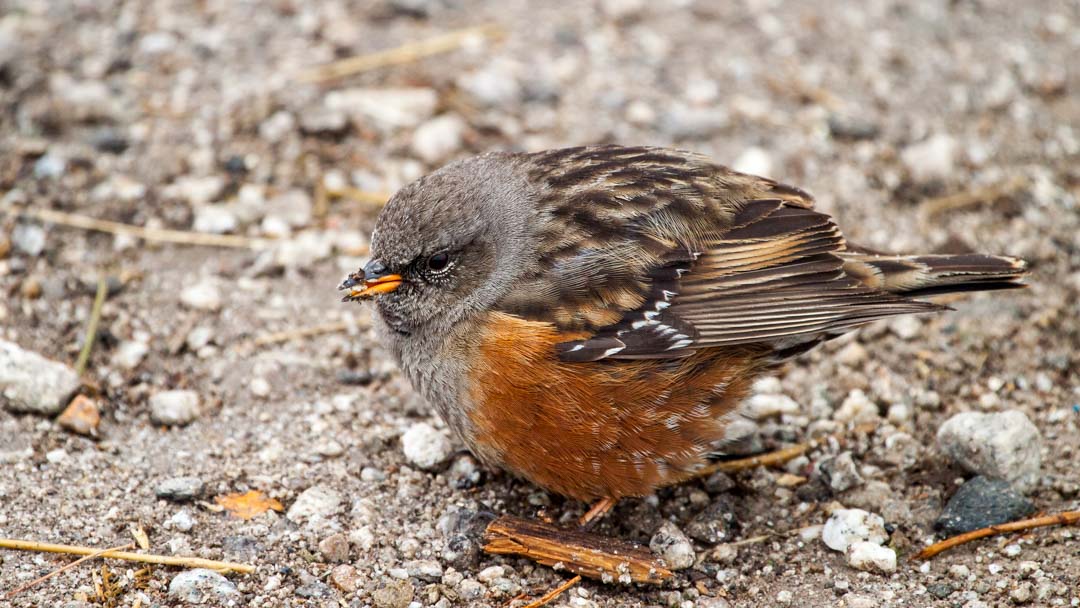
These guys are high altitude sparrows except for the fact that they love swinging. And we use the word ‘swing’ in its adult version. These birds form breeding parties in which everybody’s free to do everybody else. However, the males keep track of the females they had a good time with and only help her feed the hatchlings. They also happen to be one of the most trusting birds of the high altitudes and will only feel uneasy when you are an arm’s length away.
Best place to see in Everest Region: Gokyo, Dingboche, Pheriche, Lobuche, Gorakshep, Chukung.
8. Great Rosefinch

These birds are like little strawberries in ice cream. Adding much-needed color to the arid and snowclad environment of the upper stretches of the Everest Region, the Great Rosefinch is a cheerful little bird. However, come winter, these birds start their annual migration to lower altitudes.
Best place to see in Everest Region: Dingboche, Pheriche, Lobuche, Gorakshep, Gokyo, Chukung.
7. Red-billed Chough

Choughs are crows with red lipsticks and perhaps a more pleasant voice. It seems these guys love to fly for fun and are known for their regular acrobatic displays. They sometimes congregate in such numbers that when the whole gang takes wing, they blacken the sky. Usually, you will see them foraging in fields or breaking up yak dung for insects. Unlike most human beings, these guys mate for life, and a Cornish legend states that King Arthur’s soul migrated into one of these guys after his last battle.
Best place to see in Everest Region: Dingboche, Pheriche, Gokyo, Gorakshep, Chukung, Lobuche.
6. Spotted Nutcracker
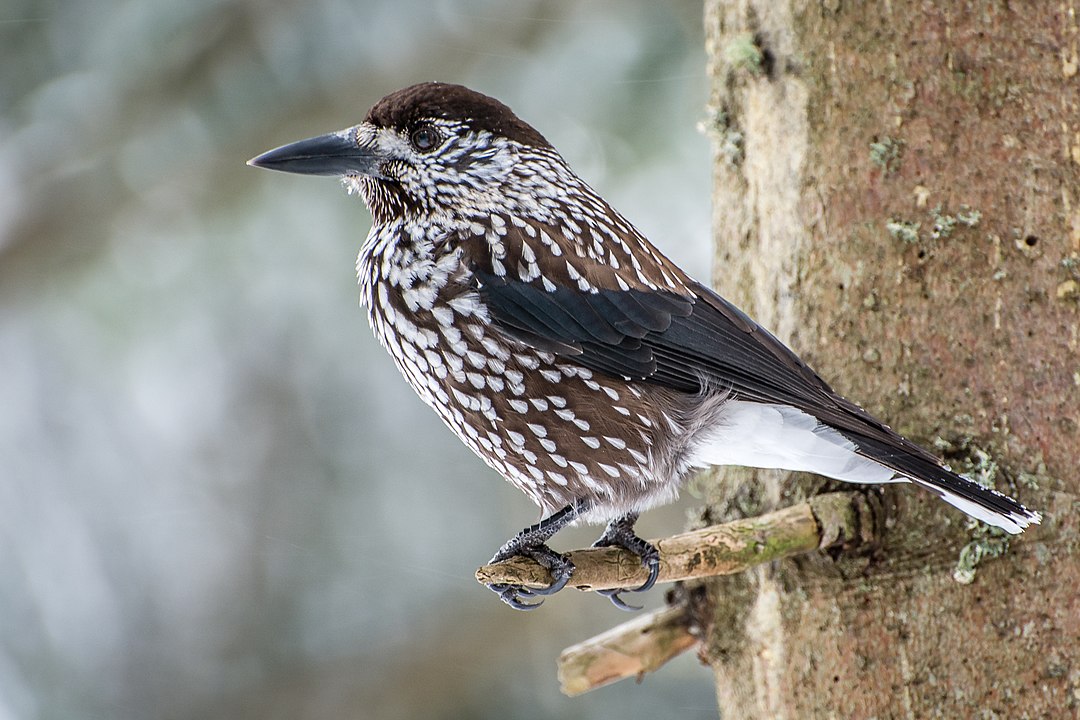
Nutcrackers are more often heard than seen, and their harsh grating call isn’t too pleasant a sound. However, this bird shows enormous foresight as a single nutcracker can store up to a hundred thousand pine nuts during plentiful times. And thanks to its fantastic memory, the hidden stash comes in handy for months on end when food becomes scarce.
Best place to see in Everest Region: Namche Bazar, Jorsalle.
5. Golden Eagle
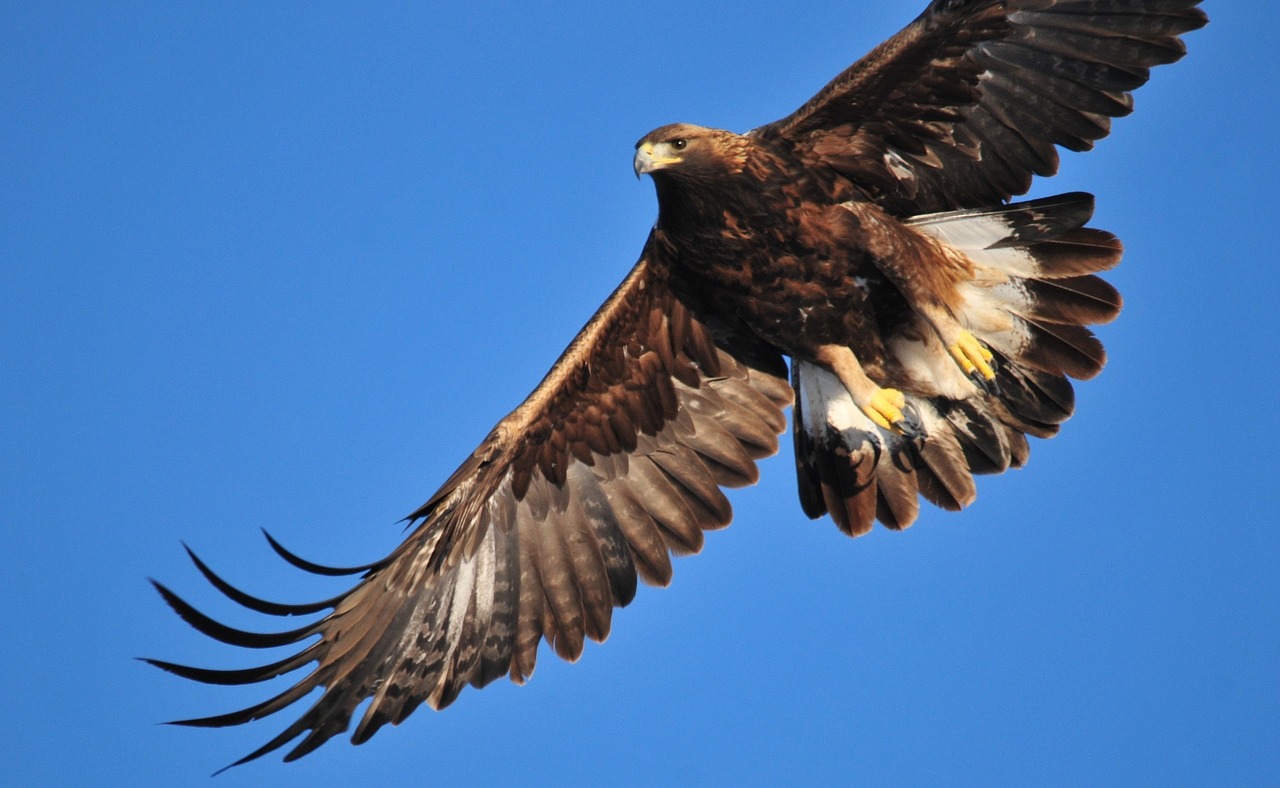
Golden Eagles are essentially tigers of the bird kingdom. Ferocious and indomitable, many countries, including Germany, pay tribute to these birds in their emblems, and the Mongols even train them to hunt foxes. They can bring down prey several times their size, and one such hunt is shown in BBC’s Planet Earth in which a pair of Golden Eagles bring down a Demoiselle crane. And guess what, the clip was shot here in Nepal at Mustang.
They can generally be told from the vultures by the way they hold their wings in a V-shape while soaring.
Best place to see in Everest Region: Namche, Pangboche, Dingboche, Pheriche, Thame, Gokyo.
4. Grandala
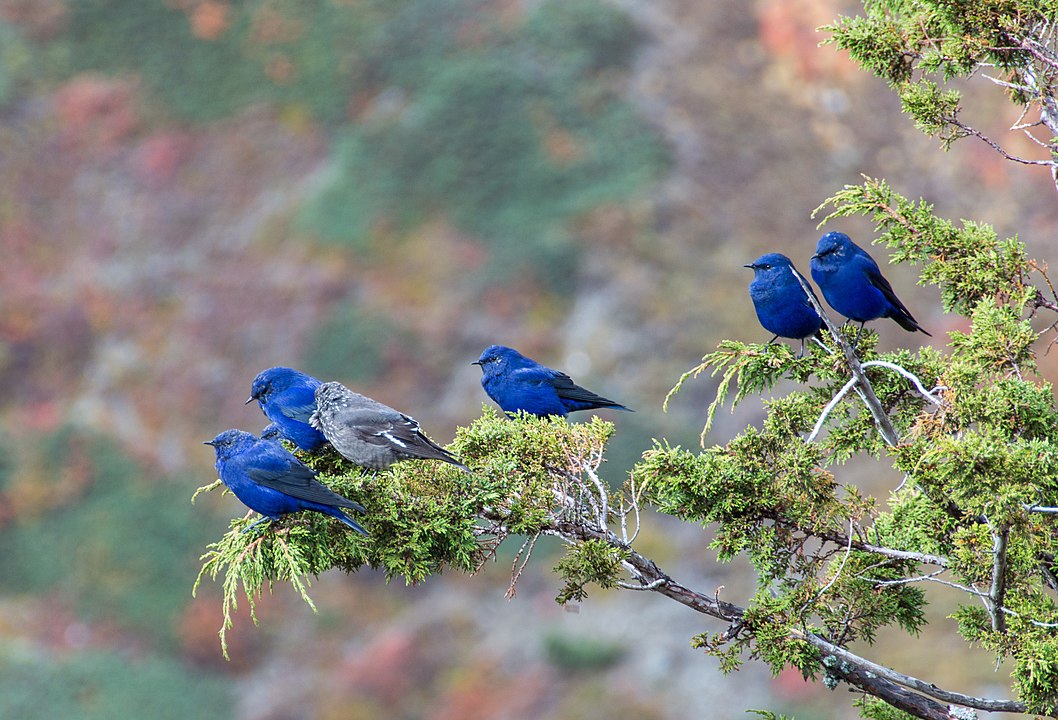
It isn’t uncommon to encounter a group of these birds numbering in the hundreds. With their searing blue color, they are quite a sight, especially when they take wing to catch insects. While one of these pretty birds would make someone’s day, imagine seeing hundreds all at once.
Best place to see in Everest Region: Lukla, Gokyo.
3. Tibetan Snowcock

This noisy partridge has forgotten the art of flight. At its best, it can flutter downhill, and that too if you insist on it. The best time to see them is during late autumn and winter when they go out in large parties up to 30 strong. They are also very tame or curious in the Everest Region, where its far-carrying kwek-kwek is a familiar sound, especially during mornings and evenings.
Best place to see in Everest Region: Gokyo, Ev-K2-CNR. While it used to be common around all high altitude settlements, with the increasing number of dogs, they have become harder to see.
2. Blood Pheasant

These pheasants are excellent runners and take wing with much reluctance. The blood in its name comes from the fact that its face, eyes, and tails are smeared crimson. It makes birch forests its natural home and is seldom found away from it.
Best place to see in Everest Region: Tengboche, Deboche, Phortse, Dole.
1. Himalayan Monal

Also called Danphe in Nepal, this guy is the dandiest of the high altitude pheasants with its iridescent plumage. It is also the national bird of Nepal and loves to fill the morning air with its far-carrying high pitched whistle. Like other high altitude birds, they are easier to see during the autumn and winter as they descend to lower altitudes then and also go about in large parties.
Best place to see in Everest Region: Namche, Pangboche, Phortse.
Checklist of the Birds of Everest Region
Everest National Park has 219 bird species. Here is the complete checklist:
| Birds of Everest National Park- Checklist | ||
| SN | Order/Family/ Common Name | Scientific Name |
| GALLIFORMES Phasianidae |
||
| 1 | Danphe/Himalayan Monal | Lophophorus impejanus |
| 2 | Snow Partridge | Lerwa lerwa |
| 3 | Blood Pheasant II | Ithaginis cruentus |
| 4 | Kalij Pheasant | Lophura leucomelanos |
| 5 | Tibetan Snowcock I | Tetraogallus tibetanus |
| 6 | Satyr Tragopan III, # | Tragopan satyra |
| ANSERIFORMES Anatidae |
||
| 7 | Northern Pintail | Anas acuta |
| 8 | Northern Shoveler | Anas clypeata |
| 9 | Common Teal | Anas crecca |
| 10 | Eurasian Wigeon | Anas penelope |
| 11 | Garganey | Anas querquedula |
| 12 | Gadwall | Anas strepera |
| 13 | Bar-headed Goose | Anser indicus |
| 14 | Common Pochard * VU | Aythya ferina |
| 15 | Tufted Duck | Aythya fuligula |
| 16 | Ferruginous Pochard | Aythya nyroca |
| 17 | Common Goldeneye | Bucephala clangula |
| 18 | Ruddy Shelduck | Tadorna ferruginea |
| PICIFORMES Picidae |
||
| 19 | Crimson-breasted Woodpecker | Dendrocopos cathpharius |
| 20 | Darjeeling Woodpecker | Dendrocopos darjellensis |
| 21 | Scaly-bellied Woodpecker | Picus squamatus |
| UPUPIFORMES Upupidae |
||
| 22 | Common Hoopoe | Upupa epops |
| CUCULIFORMES Cuculidae |
||
| 23 | Pied Cuckoo | Clamator jacobinus |
| 24 | Eurasian Cuckoo | Cuculus canorus |
| 25 | Lesser Cuckoo | Cuculus poliocephalus |
| 26 | Oriental Cuckoo | Cuculus saturatus |
| 27 | Large Hawk Cuckoo | Hierococcyx sparverioides |
| APODIFORMES Apodidae |
||
| 28 | Fork-tailed Swift | Apus pacificus |
| 29 | Himalayan Swiftlet | Collocalia brevirostris |
| STRIGIFORMES Strigidae |
||
| 30 | Little Owl II | Athene noctua |
| 31 | Eurasian Eagle Owl II | Bubo bubo |
| 32 | Tawny Owl II | Strix aluco |
| COLUMBIFORMES Columbidae |
||
| 33 | Speckled Wood Pigeon | Columba hodgsonii |
| 34 | Snow Pigeon | Columba leuconota |
| 35 | Hill Pigeon | Columba rupestris |
| 36 | Oriental Turtle Dove | Streptopelia orientalis |
| GRUIFORMES Otididae |
||
| 37 | Demoiselle Crane II | Grus virgo |
| Rallididae | ||
| 38 | Common Coot | Fulica atra |
| CICONIIFORMES Scolopacidae |
||
| 39 | Common Sandpiper | Actitis hypoleucos |
| 40 | Temminck’s Stint | Calidris temminckii |
| 41 | Common Snipe | Gallinago gallinago |
| 42 | Wood Snipe * VU | Gallinago nemoricola |
| 43 | Solitary Snipe | Gallinago solitaria |
| 44 | Eurasian Woodcock | Scolopax rusticola |
| 45 | Common Greenshank | Tringa nebularia |
| 46 | Green Sandpiper | Tringa ochropus |
| 47 | Common Redshank | Tringa totanus |
| 48 | Terek Sandpiper | Xenus cinereus |
| Charadriidae | ||
| 49 | Ibisbill | Ibidorhyncha struthersii |
| Laridae | ||
| 50 | Brown-headed Gull | Larus brunnicephalus |
| 51 | Black-headed Gull | Larus ridibundus |
| 52 | Common Tern | Sterna hirundo |
| Accipitridae | ||
| 53 | Northern Goshawk II | Accipiter gentilis |
| 54 | Eurasian Sparrowhawk II | Accipiter nisus |
| 55 | Besra | Accipiter virgatus |
| 56 | Cinereous Vulture II | Aegypius monachus |
| 57 | Steppe Eagle * EN, II | Aquila nipalensis |
| 58 | Golden Eagle II | Aquila chrysaetos |
| 59 | Imperial Eagle * VU, I | Aquilla heliaca |
| 60 | Common Buzzard II | Buteo buteo |
| 61 | Long-legged Buzzard II | Buteo rufinus |
| 62 | Hen Harrier II | Circus cyaneus |
| 63 | Lammergeier II | Gypaetus barbatus |
| 64 | Himalayan Griffon II | Gyps himalayensis |
| 65 | Booted Eagle II | Hieraaetus pennatus |
| 66 | Black Kite II | Milvus migrans |
| 67 | Osprey II | Pandion haliaetus |
| Falconidae | ||
| 68 | Merlin II | Falco columbarius |
| 69 | Peregrine Falcon I | Falco peregrinus |
| 70 | Common Kestrel II | |
| Podicipedidae | ||
| 71 | Great Crested Grebe | Podiceps cristatus |
| 72 | Black-necked Grebe | Podiceps nigricollis |
| PASSERIFORMES Laniidae |
||
| 73 | Grey-backed Shrike | Lanius tephronotus |
| Corvidae | ||
| 74 | Common Raven | Corvus corax |
| 75 | Large-billed Crow | Corvus macrorhynchos |
| 76 | Ashy Drongo | Dicrurus leucophaeus |
| 77 | Spotted Nutcracker | Nucifraga caryocatactes |
| 78 | Long-tailed Minivet | Pericrocotus ethologus |
| 79 | Yellow-bellied Fantail | Pericrocotus hypoxantha |
| 80 | Red-billed Chough | Pryrhocorax pyrrhocorax |
| 81 | Yellow-billed Chough | Pyrrhocorax graculus |
| 82 | Yellow-billed Blue Magpie | Urocissa flavirostris |
| 83 | Hume’s Groundpecker | Pseudopodoces humilis |
| Cinclidae | ||
| 84 | White-throated Dipper | Cinclus cinclus |
| 85 | Brown Dipper | Cinclus pallasii |
| Muscicapidae | ||
| 86 | White-capped Water Redstart | Chaimarrornis leucocephalus |
| 87 | Oriental Magpie Robin | Copsychus saularis |
| 88 | Little Forktail | Enicurus scouleri |
| 89 | Spotted Forktail | Enicurus maculatus |
| 90 | Verditer Flycatcher | Eumyias thalassina |
| 91 | Rufous-gorgeted Flycatcher | Ficedula strophiata |
| 92 | Ultramarine Flycatcher | Ficedula superciliaris |
| 93 | Slaty-blue Flycatcher | Ficedula tricolor |
| 94 | Grandala | Grandala coelicolor |
| 95 | White-bellied Redstart | Hodgsonius phaenicuroides |
| 96 | White-tailed Rubythroat | Luscinia pectoralis |
| 97 | Indian Blue Robin | Luscinia brunnea |
| 98 | Bluethroat | Luscinia svecica |
| 99 | Chestnut-bellied Rock Thrush |
Monticola rufiventris |
| 100 | Ferruginous Flycatcher | Muscicapa ferruginea |
| 101 | Blue Whistling Thrush | Myophonus caeruleus |
| 102 | Rufous-bellied Niltava | Niltava sundara |
| 103 | White-winged Redstart | Phoenicurus erythrogaster |
| 104 | Blue-fronted Redstart | Phoenicurus frontalis |
| 105 | Hodgson’s Redstart | Phoenicurus hodgsoni |
| 106 | Blue-capped Redstart | Phoenicurus coeruleocephalus |
| 107 | Black Redstart | Phoenicurus ochruros |
| 108 | White-throated Redstart | Phoenicurus schisticeps |
| 109 | Plumbeous Water Redstart | Rhyacornis fuliginosus |
| 110 | Grey Bushchat | Saxicola ferrea |
| 111 | Common Stonechat | Saxicola torquata |
| 112 | Golden Bush Robin | Tarsiger chryaseus |
| 113 | Himalayan Bluetail | Tarsiger (cyanurus) rufilatus |
| 114 | White-browed Bush Robin | Tarsiger indicus |
| 115 | White-collared Blackbird | Turdus albocinctus |
| 116 | Kessler’s Thrush | Turdus kessleri |
| 117 | Eurasian Blackbird | Turdus merula maximus |
| 118 | Dark-throated Thrush | Turdus ruficollis |
| 119 | Black-throated Thrush | Turdus atrogularis |
| 120 | Mistle Thrush | Turdus viscivorus |
| 121 | Long-tailed Thrush | Zoothera dixoni |
| 122 | Plain-backed Thrush | Zoothera mollissima |
| Sturnidae | ||
| 123 | Purple-backed Starling | Sturnus sturninus |
| Sittidae | ||
| 124 | Wallcreeper | Tichodroma muraria |
| 125 | White-tailed Nuthatch | Sitta himalayansis |
| Certhiidae | ||
| 126 | Eurasian Treecreeper | Certhia familiaris |
| 127 | Rusty-flanked Treecreeper | Certhia nipalensis |
| 128 | Winter Wren | Troglodytes trolodytes |
| Paridae | ||
| 129 | Coal Tit | Parus ater |
| 130 | Grey-crested Tit | Parus dichrous |
| 131 | Great Tit | Parus major |
| 132 | Green-backed Tit | Parus monticolus |
| 133 | Rufous-vented Tit | Parus rubidiventris |
| 134 | Yellow-browed Tit | Sylviparus modestus |
| Aegithalidae | ||
| 135 | Black-throated Tit | Aegithalos consinnus |
| 136 | Rufous-fronted Tit | Aegithalos iouschistos |
| Hirundinidae | ||
| 137 | Asian House Martin | Delichon dasypus |
| 138 | Nepal House Martin | Delichon nepalensis |
| 139 | Eurasian Crag Martin | Hirundo rupestris |
| 140 | Barn Swallow | Hirundo rustica |
| Regulidae | ||
| 141 | Goldcrest | Regulus regulus |
| Sylviidae | ||
| 142 | White-browed Fulvetta | Alcippe vinipectus |
| 143 | Rufous-winged Fulvetta | Alcippe castaneceps |
| 144 | Grey-sided Bush Warbler | Cettia brunnifrons |
| 145 | Black-faced Laughingthrush | Garrulax affinis |
| 146 | Chestnut-crowned Laughingthrush | Garrulax erythrocephalus |
| 147 | Streaked Laughingthrush | Garrulax lineatus |
| 148 | Spotted Laughingthrush | Garrulax ocellatus |
| 149 | Rufous Sibia | Heterophasia capsitrata |
| 150 | Bar-throated Siva | Minla strigula |
| 151 | Fulvous Parrotbill | Paradoxornis fulvifrons |
| 152 | Tickell’s Leaf Warbler | Phylloscopus affinis |
| 153 | Lemon-rumped Warbler | Phylloscopus chlorontus |
| 154 | Smoky Warbler | Phylloscopus fuligiventer |
| 155 | Yellow-browed Warbler | Phylloscopus inornatus |
| 156 | Ashy-throated Warbler | Phylloscopus maculipennis |
| 157 | Large-billed Leaf Warbler | Phylloscopus magnirostris |
| 158 | Western Crowned Warbler |
Phylloscopus occipitalis |
| 159 | Buff-barred Warbler | Phylloscopus pulcher |
| 160 | Blyth’s Leaf Warbler | Phylloscopus reguloides |
| 161 | Greenish Warbler | Phylloscopus trochiloides |
| 162 | Scaly-breasted Wren Babbler | Pnoepyga albiventer |
| 163 | Green Shrike Babbler | Pteruthius xanthochlorus |
| 164 | Hoary-throated Barwing | Actinodura nipalensis |
| 165 | Green-crowned Warbler | Seicercus burkii |
| 166 | Whistler’s Warbler | Seicercus whistleri |
| 167 | Grey-hooded Warbler | Seicercus xanthoschistos |
| 168 | Stripe-throated Yuhina | Yuhina gularis |
| 169 | Rufous-vented Yuhina | Yuhina occipitalis |
| Alaudidae | ||
| 170 | Oriental Skylark | Alauda gulgula |
| 171 | Hume’s Short-toed Lark | Calandrella acutirostris |
| 172 | Greater Short-toed Lark | Calandrella brachydactyla |
| 173 | Horned Lark | Eremophila alpestris |
| Nectariniidae | ||
| 174 | Yellow-bellied Flowerpecker | Dicaeum melanoxanthum |
| 175 | Mrs Gould’s Sunbird | Aethopyga gouldiae |
| 176 | Green-tailed Sunbird | Aethopyga nipalensis |
| 177 | Fire-tailed Sunbird | Aethopyga ignicauda |
| Passeridae | ||
| 178 | Blyth’s Pipit | Anthus godlewskii |
| 179 | Tree Pipit | Anthus trivialis |
| 180 | Olive-backed Pipit | Anthus hodgsoni |
| 181 | Rosy Pipit | Anthus roseatus |
| 182 | Citrine Wagtail | Montacilla citreola |
| 183 | White Wagtail | Montacilla alba |
| 184 | Grey Wagtail | Montacilla cinerea |
| 185 | Rufous-necked Snowfinch | Montifringilla ruficolis |
| 186 | Black-winged Snowfinch | Montrifringilla adamsi |
| 187 | House Sparrow | Passer domesticus |
| 188 | Eurasian Tree Sparrow | Passer montanus |
| 189 | Russet Sparrow | Passer rutilans |
| 190 | Alpine Accentor | Prunella collaris |
| 191 | Brown Accentor | Prunella fulvescens |
| 192 | Altai Accentor | Prunella himalayana |
| 193 | Robin Accentor | Prunella rubeculoides |
| 194 | Rufous-breasted Accentor | Prunellla strophiata |
| 195 | Maroon-backed Accentor | Prunella immaculata |
| Fringillidae | ||
| 196 | Twite | Carduelis flavirostris |
| 197 | Yellow-breasted Greenfinch | Carduelis spinoiedes |
| 198 | Common Rosefinch | Carpodacus erythrinus |
| 199 | Dark-brested Rosefinch | Carpodacus nipalnesis |
| 200 | Beautiful Rosefich | Carpodacus pulcherrimus |
| 201 | Red-fronted Rosefinch | Carpodacus puniceus |
| 202 | Pink-browed Rosefinch | Carpodacus rodochrous |
| 203 | Spot-winged Rosefinch | Carpodacus rodopeplus |
| 204 | Great Rosefinch | Carpodacus rubicilla |
| 205 | Streaked Rosefinch | Carpodacus rubicilloides |
| 206 | White-browed Rosefinch | Carpodacus thura |
| 207 | Chestnut-eared Bunting | Emberiza fucata |
| 208 | Little Bunting | Emberiza pusilla |
| 209 | Brandt’s Mountain Finch | Leucostice brandti |
| 210 | Plain Mountain Finch | Leucostice nemoricola |
| 211 | Red Crossbill | Loxia curvirostra |
| 212 | Collared Grosbeak | Mycerobas affinis |
| 213 | Spot-winged Grosbeak | Mycerobas melanozanthos |
| 214 | White-winged Grosbeak | Nycerobas carnipes |
| 215 | Crimson-browed Finch | Pinicola subhimachala |
| 216 | Brown Bullfinch | Pyrrhula nipalensis |
| 217 | Scarlet Finch | Haematospiza sipahi |
| 218 | Red-headed Bullfinch | Pyrrhula erythrocephala |
| 219 | Tibetan Serin | Serinus thibetanus |
Are you interested in birdwatching in the Everest Region?
Please send us a message on WhatsApp, or you can fill-up the form below







